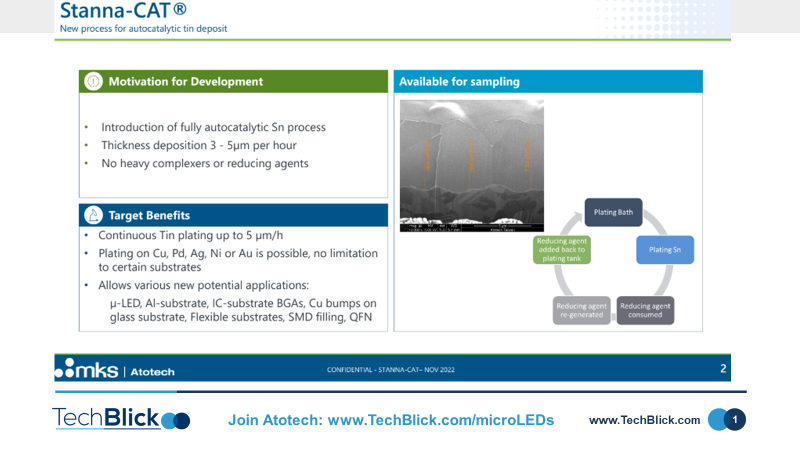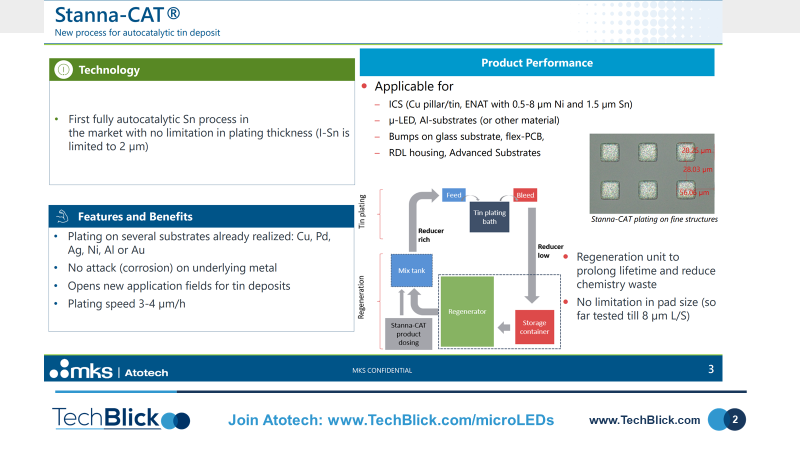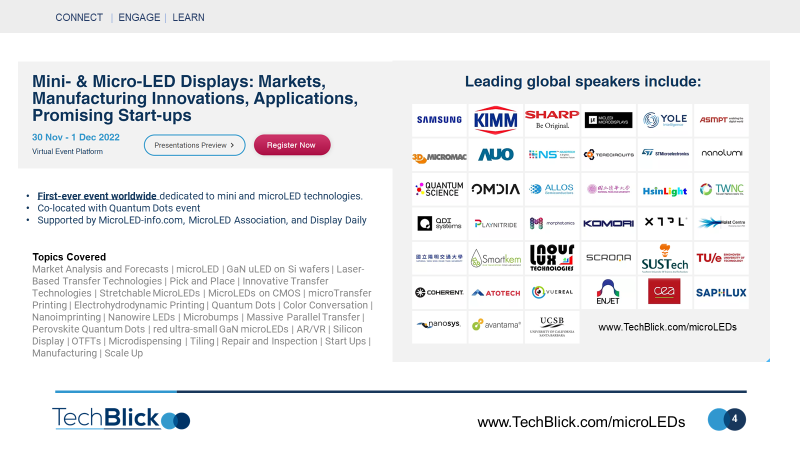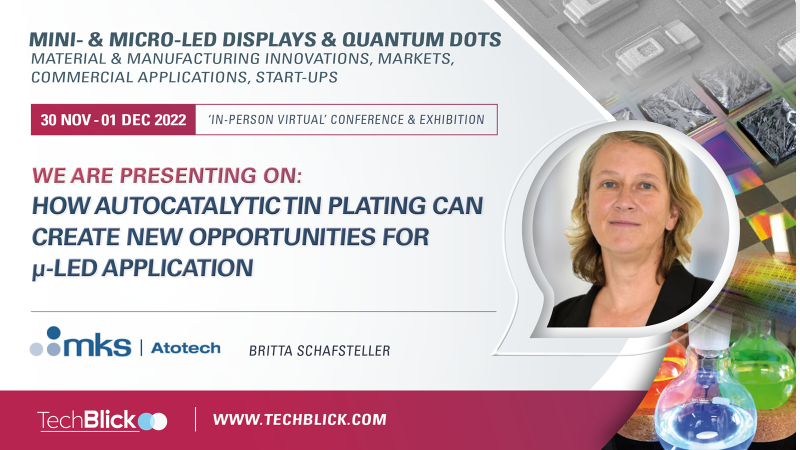Even though µ-LED manufacturing has moved forward over recent years, it is still in early development stage, resulting high costs and poor yields. Thus, finding pathways to reduce manufacturing costs and improve overall yield is of major interest to the industry.
An alternative path would be to replace the solder paste in solder paste printing by plating process. To solve this issue Atotech Group has developed a new auto-catalytic tin process that can overcome the thickness limitation of existing immersion tin process.
This process works fully autocatalytic and by this has no limitation on the underlying metal type or tin layer thickness. By this plating on substrates like e.g. Cu, Pd, Au or Ni have been realized without the chemical attack on the underlying layer.
In order to reduce the chemistry consumption and chemical waste a regeneration unit is available to recover the reducing agent and run the plating solution in cycle. This allows a cost competitive plating solution with fine line capabilities which provide benefits over conventional printing methods.
To learn more about this exciting development, join us on 30NOV-1Dec for a world-class event on microLEDs featuring the likes of Sharp, Samsung, Allos Semiconductor, Omdia, ASMPT, Yole, Nanosys, Epistar, Coherent, MKS, and many more. See full agenda and sign up here www.TechBlick.com/microLEDs










Comments